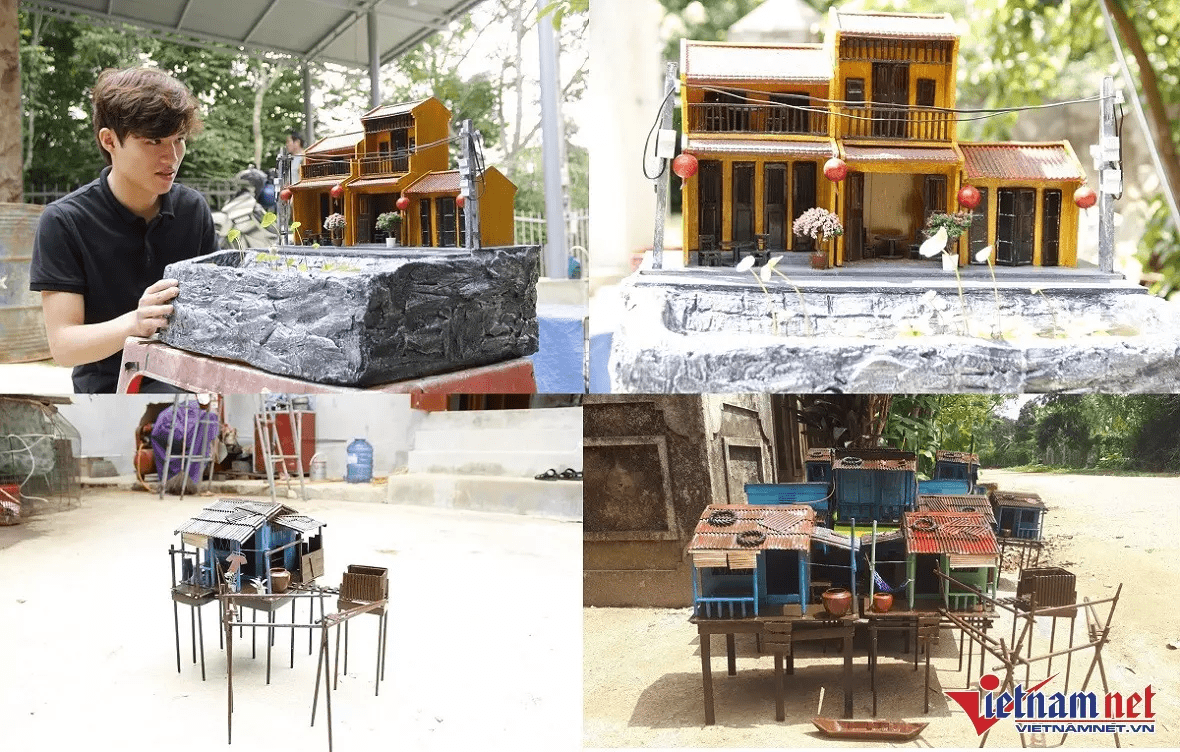
Tung’s parents have been making votive papers for 20 years. He began helping his parents when he was a sixth grader.
“The work requires meticulousness and carefulness. I find myself suitable for this work,” he said.
He made miniature models in combination with an aquarium to make it more lively. Seeing miniature models on the internet, he decided to make similar models himself.
“After I completed the models, I decided to show them on social networks as I found them very interesting. I received a lot of encouragement from netizens and I got the first orders,” he said.
Most of Tung’s mini scenes retrace life in the past of Mekong Delta’s people, from wooden houses floating on rivers to boats people use to travel to women in ao ba ba (loose fitting blouse) and items such as clothes, tables and chairs, bookcases, water jars, flower pots, and stairs. There are also coils of rope and stones on the roof. Tung also recreates scenes of old and new Hoi An.
Tung chooses different paint colors and paint mixture methods for different items. Each item has a unique color.
He chooses brown and black colors for old furniture, but warm colors for Hoi An’s streets.
Making money from waste
According to Tung, the materials used to make mini scenes are easy to find, from discarded cartons to bamboo slats, chopsticks, ice cream sticks and other items used in daily life. After he collects materials, he paints the materials and glues them.
The smallest mini scenes are only 20 centimeters, while big ones are 30-40 centimeters in length and 25-30 centimeters wide. The prices of products are between VND900,000 and VND4.6 million.
It takes Tung one day to make a small mini scene, but he needs one week to make bigger ones.
In the peak season, Tung could make 30 products a month, and earn VND20 million. He had difficulties in delivering products to clients in 2021 because of Covid-19.
To date, Tung has sold 150 miniatures, big and small, to clients throughout the country. The posts on miniature sale published in Facebook have reached clients in Japan and Cambodia as well.
Asked about difficulties when making such products, Tung said he only paints products on sunny days and then dries them under the sun, because he fears that humidity will affect the durability of the products.
Huong Lai